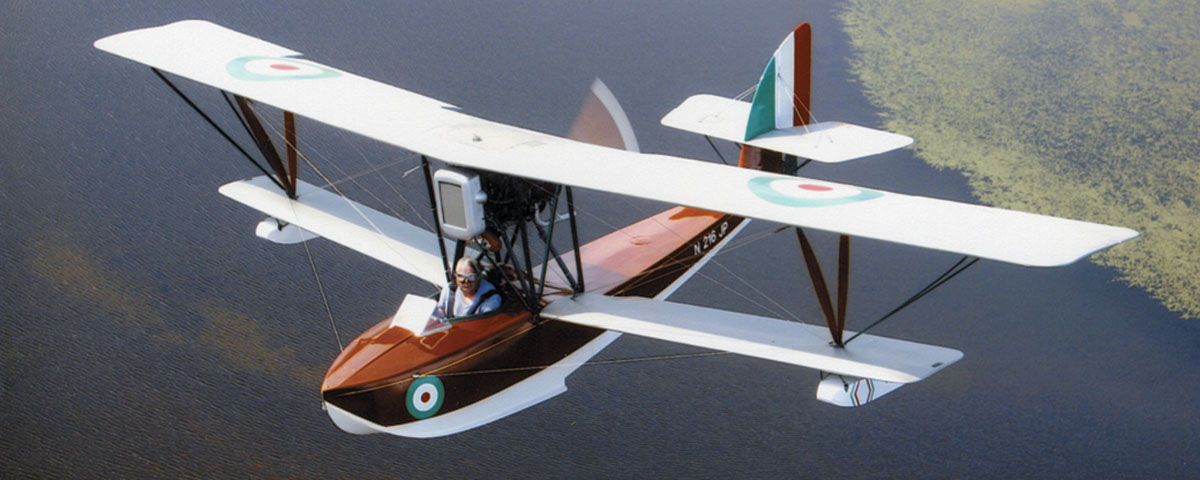When I first read that a Holland, Mich., aviation enthusiast and former pilot had built a Macchi M.5 “fighter plane,” I put that description down to a newspaper columnist’s overheated and underinformed enthusiasm. After all, the 1917 M.5 was a cute-asa-scooterbug little single-seat flying boat that looked about as warlike as a canoe with wings. But by golly it was a fighter, fast and maneuverable for its time, and armed with two Vickers machine guns. Two Italian aces were credited with five victories each flying them. M.5s were even flown by the U.S. Navy in the Adriatic during World War I, and one Navy Macchi pilot was awarded a Medal of Honor for rescuing a fellow aviator who was shot up and had to ditch. (Ensign Charles Hammann landed near Ensign George Ludlow and took off with Ludlow hanging onto the M.5’s struts.)
Equally remarkable is the builder of the Lycoming-engine replica, 80-year-old Jason Petroelje, a highly regarded manufacturer of wooden speedboats. It took him 10 years and 5,000 hours, but the entire airplane was scratch-built by Petroelje in a workshop the size of an ordinary living room, and he did most of the work literally single-handed. (A stroke had left him with tremors in his right hand.) Having used my two clumsy but substantially younger hands to build an Italian wooden plane—a sleek 1950s design called a Falco—I’d nominate Petroelje for a medal myself. He also did the job from a $40 set of archival plans in Italian, which he doesn’t read.
This feature originally appeared in the March 2009 issue of Aviation History. Subscribe here!





